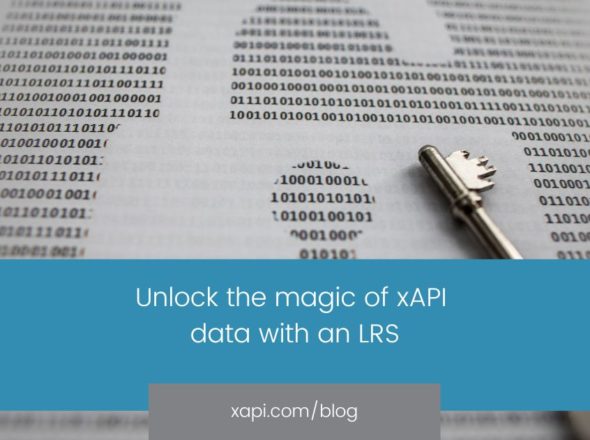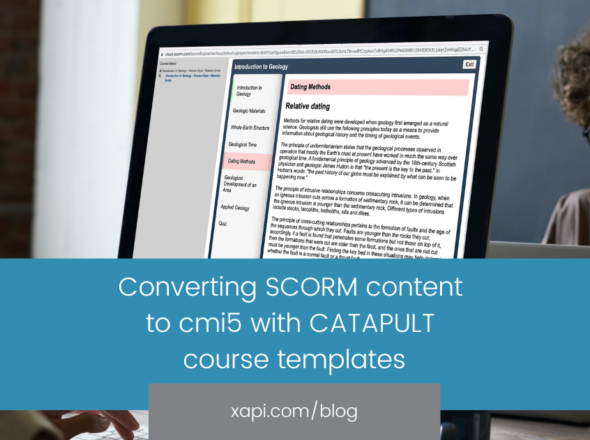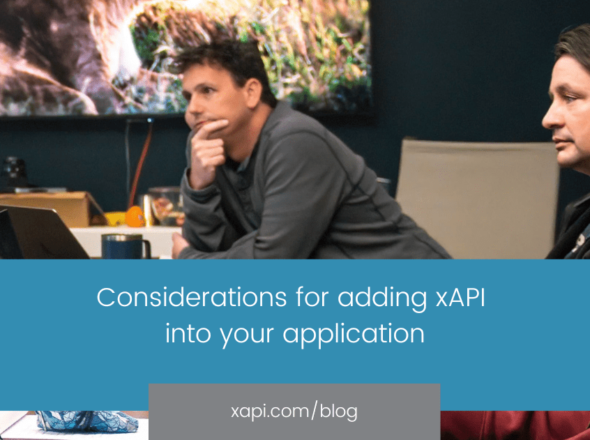Around the Rustici office, it’s fairly common to hear that eLearning standards are often slow movers. xAPI turned 10 years old in April, the oldest versions of SCORM are over 21, and even the “new kid” cmi5 is now 7. Earlier this year, there was movement. The IEEE board approved “IEEE 9274.1.1-2023” aka – and much easier to remember – xAPI 2.0. Meaning, the IEEE board deemed that the standard was peer reviewed, leveraged existing good practices, and will continue to make sure it is “maintained” for the foreseeable future. xAPI 2.0 also marks the first time an open-source specification has become a standard.
So does this mean you have to do anything right now if you’re leveraging xAPI in your platform? Generally the answer is no. What you can do now to prepare for moving to xAPI 2.0 is to make sure you have implemented — and are adhering to — the 1.0 best practices as the requirements didn’t change significantly from what was already included.
Notable xAPI 1.0 best practices
As you’re reviewing your xAPI implementation, here are a few key aspects of the 1.0 specification to be ready for 2.0.
- MUSTS. Anything that was a “MUST” is now referred to as a “SHALL.” This is a change in language, and “SHALL” is still a requirement.
Suggestions. SHOULD*s marked with an “*” had long been identified as best practices and were converted into SHALLs. Most vendors treat SHOULD*s as requirements already. SHOULDs without an “*” remain suggestions. - Authorization. Authorization was removed from the standard, but it had only really been loosely defined in the original specification. Vendors had already implemented the most common authorization strategies and were able to add whatever strategies they needed to satisfy customer requests.
- Adoption. Most vendors recognize that the road is a long one to get to significant market penetration of the 2.0 standard and therefore are likely to support both the 1.x and 2.x lines for years (decades).
- cmi5. cmi5, which is the most recommended approach for handling LMS-based, single learner content, is now on a standardization track, but it’s currently limited to using the 1.0.x version. The cmi5 working group is moving the specification toward becoming an IEEE standard that will reference xAPI 2.0 and is working to make it largely backwards compatible. This process will take a while – a year or more – to materialize.
- “Tin Can.” If you’ve been leveraging “Tin Can” support (sometimes called “xAPI” packages in an authoring tool) know that Rustici products will not support xAPI 2.0 based communication from this type of package. You will want to use cmi5 going forward.
ADL’s Total Learning Architecture (TLA) efforts are pushing for modernizing learning and integrating emerging technologies. As these efforts continue, likely so will standards implementations, so it’s a good idea to track the developments of the IEEE LTSC group.
What to do to prepare
In addition to implementing the above best practices, here is my recommended checklist to get ready to implement xAPI 2.0.
- Start leveraging cmi5 as the base specification for your launched content needs.
- Confirm that your tool and tools in your ecosystem have support for 2.0 on the roadmap and will support both the 1.0.x specification and the 2.0 standard for the foreseeable future.
- Migrate off of any system or content that is still using the very early 0.9 version of xAPI (or Tin Can).
If you’re currently a Rustici customer, our products are being updated to handle both 1.0.x and 2.0 starting with Rustici LRS support for the base standard. That support will be available in the Rustici LRS/Engine 23.x version available in December 2023. Content Controller and SCORM Cloud should have support in calendar year 2024. I’m also part of the cmi5 working group and serve as a IEEE committee officer, so we’re always staying up to date with what’s happening in the eLearning standards world.
Remember, specifications move slowly, and standards move even slower. The good news is that, as a standard, we expect xAPI 2.0 to have a very long shelf life. Just look at SCORM, and it doesn’t even have the flexibility of xAPI. There is no reason to panic, no reason to move hastily, and know that Rustici has your back on standards based products.


